Flying a drone: Everything you need to know
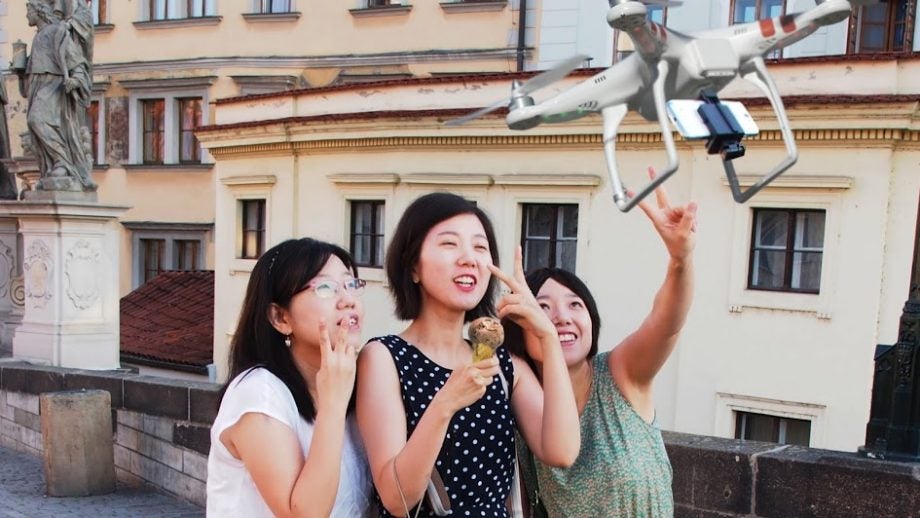
Just bought a drone? Here’s what you need to know before you take flight…
Once the exclusive plaything of the US Army and the snoopy super-rich, drones have recently surged in popularity thanks to being packed in a much smaller package and, well, we just want to have fun. That’s their fundamental appeal, and our obsession with photography means any new angle – in this case from above – is exciting.
While easy to use, drones don’t demean the user: they’re not afraid to pack a toy with top-end tech and set off a new wave of sophisticated gadgets.
But there’s much more than meets the eye with the drone: where and how you can fly it, what you can do with it, and what’s coming up in the world of drones – it’s time to get informed before you’re cleared for takeoff.
The basics
Before you even type “drone” into Amazon’s search bar, let’s go through the basics. A drone is a battery-powered gadget that flies, takes pictures, zooms around, carries things and generally makes your afternoon in the park that little bit more interesting. Despite the controversy over their safe and legal use, everyone from Merseyside Police, Google and Amazon to the kid next door is getting a piece of aerial action.
Related: DJI Phantom 3 review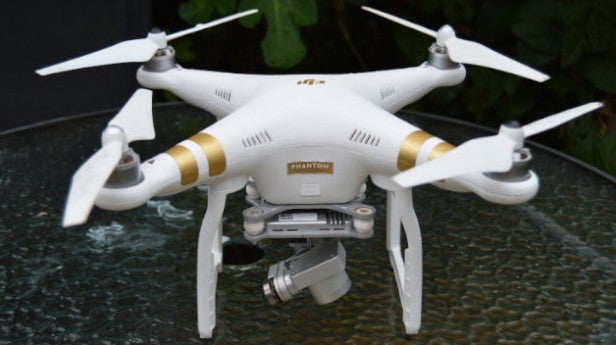
The most recognised brand is Parrot, who make a range of robotic toys, but drone devotees will know 3D Robotics and DJI as pioneers of drones sitting at the higher end of the price range. You can spend anything from £300 to £3,000 on a drone, but unless you fancy yourself as a flying pro, it’s best to start small until you’ve got the gist.
The recreational drone market is growing rapidly, with plenty of fresh faces kicking around coming up with smarter ways to use drones and how they interact with the user. You’ll know we’ve reached “peak drone” when Tesco release an own-brand one, but until then it’s something to get very excited about.
The letter of the law – What you can’t do
Needless to say, you can’t go flying your shiny new toy over Guantanamo Bay. With great gadgets comes great responsibility, and the use of drones is governed by the Civil Aviation Authority’s air navigation regulations. To summarise, your drone must weigh less than 20kg, you can’t fly them within 150m of a congested area, outdoor assembly of more than 1,000 people or within 50m of a vehicle, structure or property that’s not under the drone user’s control.
Related: Crowdfunded tech you should invest in this month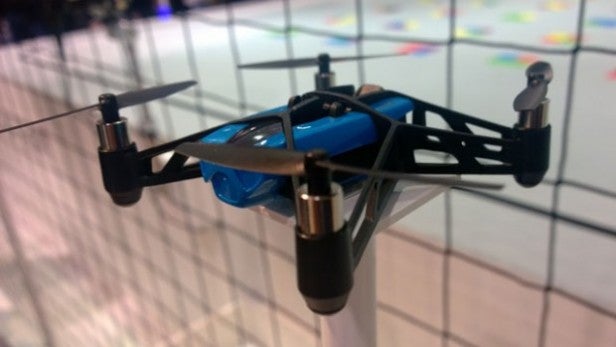
You have to keep the drone ‘in sight’, set at 122m vertically and 500m horizontally, and obtain explicit permission from the CAA to go any further. Drones with cameras – the vast majority – are legally classed as unmanned surveillance aircraft, and can’t be flown within 30m of anyone.
If you’re using a drone commercially, you need a licence from the CAA and prove you are “sufficiently competent” and if the drone weighs more than 20kg, it can only be used in specific “danger areas” such as aerodromes.
That’s all for now, but the House of Lords EU Committee has called for compulsory registration of all drones, and more regulation is inevitable as their popularity grows.

The CAA spend most of their time stopping unlicensed pilots from using their drones for commercial use, but the UK’s first conviction for misuse of a recreational drone back in April proved the law is hot on the tails of tech developments. Chances are you’ve spent enough on the drone that you don’t fancy shelling out for a £800 fine too. Simply, the more bits on the drone, whether it’s a thermal sensor or a camera, the more you need to think about what you’re doing with it.
What you can do legally and easily
Now for the good news. Despite that all sounding very restrictive, there’s still a bunch of fun stuff you can do with a drone. Take a shot of the annual family BBQ, shoot yourself snowboarding, or chart the progress of your extension in the back garden by periodically taking photos from the sky. Attach a tracker to your dog and follow him as he’s bounding around a field, or take pictures of your son’s football game.
Concerts and festivals are, unfortunately, no-go zones, as is your neighbour’s back yard, but if you own the property and you have the agreement of everyone in the image, you’re clear for takeoff.
Related: When tech goes wrong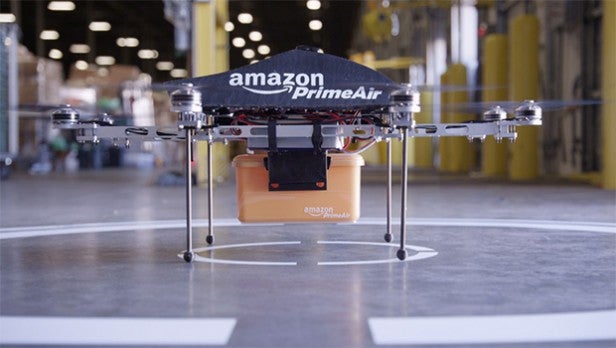
If your drone has a first-person view camera on the front, you can even sign up to FPV racing, in which quadcopters and drones (some even homemade) battle it out on a course of flags and obstacles. There are clubs all over the country and an official organisation that looks after it all.
Types of drones
The majority of drones on the market are four-legged monsters with a camera or two stuck on. They’re controlled by a phone or tablet using the partner app, connected via Wi-Fi or Bluetooth – newer generations are expanding this to include wearables and games consoles as controllers.
Parrot’s drone was one of the first to take off; its latest model, the AirDrone2, comes with a 1080p camera and carbon fibre tubes, with an overall weight of 420g.
Related: 6 of the rarest tech prototypes ever discovered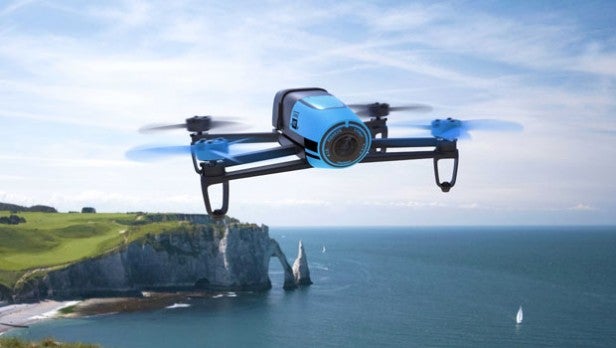
Chinese company DJI’s Phantom, another relative veteran of the market, has just released its new model, which can live-stream video to YouTube and even withstand substantial crashes into water and walls.
3D Robotics, based in San Francisco, have an alternative; Solo, billed as a ‘smart drone’, is the world’s first to offer GoPro controls from the remote, and sends live video and high-quality photos straight to your phone. All three can come in at under £700, depending on which options you go for.
Toss the Lily drone, currently in development, into the air and watch it follow you around like your personal CCTV, tracking you snowboarding, surfing or just walking in the country. Rather than a tablet or phone, the Lily tracks you by connecting to a wristband or tracker in your pocket. Its 1080p camera / 720p playback will no doubt produce great quality video and photo, and at £330 it’s a very reasonable purchase.
Related: Who’s winning the race to put 4K on your television?
Other drones make use of existing cameras, such as the Lehmann LA200 system, which perfects its navigation system and hits an impressive flying time of up to 45 minutes, leaving you to mount the GoPro to the system. It comes in at £1,300, and that’s before you’ve bought the GoPro.
To buy or not to buy
Drones are a fun and exciting new gadget to the market, and we’re going to see many more ways to use them as the market develops. While there are a couple of established brands already – Parrot, DJI, 3D Robotics – there’s plenty more start-ups looking to enter the market with more niche drones and sophisticated tech. Moving away from taking images as the primary function would open up exciting possibilities, as would inter-drone connectivity – why control one when you can manage a whole fleet – and the ability of drones to operate themselves, as Army-sized drones can.
Something that can fold up or minimise in a light and convenient way would be a huge advantage, even if the tech didn’t quite hit the professional end of the spectrum. The power to control something 50ft in the air from your smartphone shouldn’t go to waste: mundane tasks such as clearing the gutters or washing your car would be easier with a drone buzzing around doing the hard work for you. Any way to speed up weekend chores and we’re in.
If you’re eager to get a slice of drone action, go ahead and splash out on something on the cheaper end of the range, but don’t get too attached – the future of recreational drones is just around the corner.

